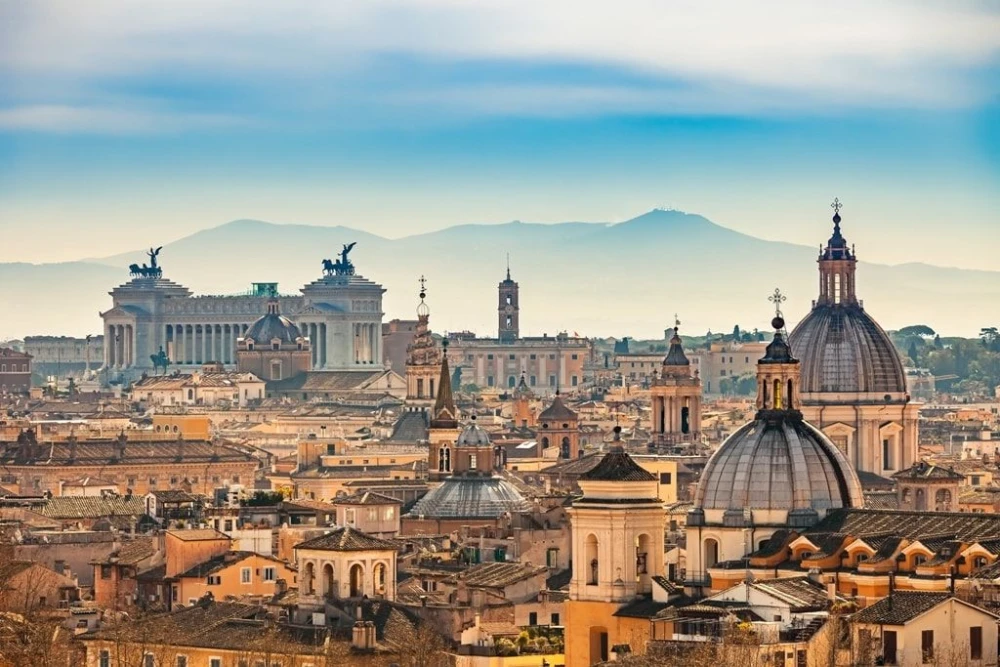15124, Maroysi, Athens, Greece
Civitavecchia (Rome), Messina, La Valletta, Heraklion/Crete, Piraeus/Athens


Our gateway to the Eternal City, Civitavecchia has served as Rome's seaport since the 13th century, boasting a long and venerable history. Its location near the modern city, made it a perfect vacation resort for emperor Trajan, who built a pleasure villa. while Bernini and Michelangelo designed the harbor fortifications. Yet the Eternal City, the ancient capital of the Western World and the center of Christianity for nearly 2.000 years, is our main reason to be here. YYou can visit the ruins of the Forum and the Colosseum, throw a coin in Fontana di Trevi to make sure you return to Rome one day, take a photo in front of the Vatican, view the splendors of the Sistine Chapel or climb the Spanish Steps, once the heart of Rome's Bohemian Quarter and enjoy a delicious gelato, in the glamorous area.

Founded by Greek colonists in the 8th century BC, Messina is the 3rd largest city on the island of Sicily and the 13th largest city in Italy. The town is amphitheatrically built on top of a hill overlooking the sea and offers great views. While you wander around its alleys, you will see the Cathedral (12th century) and notice especially the Chapel of the Sacrament (late 16th century), with scenic decorations and 14th century mosaics and a bell tower which holds one of the largest astronomical clocks in the world. Among other main attractions are the Palazzo Calapaj, an example of 18th century Messinese architecture, San Ranieri lighthouse (1555), Galleria d'Arte Contemporanea di Messina, hosting notable paintings by Caravaggio and Antonello da Messina, the Fountain of Orion, located next to the Cathedral and the Fountain of Neptune, looking towards the harbour, both built by Giovanni Angelo Montorsoli in 1547 and 1557 respectivelly. Messina is the gateway to Taormina and its views of snowcapped Mt. Etna.

Valletta, The Fortress City, Citta' Umilissima, "a city built by gentlemen for gentlemen" is Malta's capital city: a living, working city, the administrative and commercial heart of the Islands. The city is busy by day, yet retains a timeless atmosphere. The grid of narrow streets boasts some of Europe's finest art works, churches and palaces, among which St. John's Co-Cathedral, with its elaborate inlaid marble tombstones and Caravaggios and the Grand Master's Palace. Enjoy visiting the famous Three Cities across the Grand Harbour and if you have time, Sliema/ St. Julian's/ Paceville area, renowned for its cosmopolitan feel and lively nightlife.

Ηere in the island’s capital and largest city, you can wander among the squares and fountains or gaze out over the azure blue waters of the Cretan Sea, as you enjoy fresh seafood in a local taverna on the promenade. Don't miss the Palace of Knossos, the largest of the preserved Minoan palatial centres, situated not more than 5 kms from Heraklion. It is the most visited archaeological site in Crete. The palace was the seat of the legendary King Minos and has been associated with famous Greek myths, like that of Daedalus and Icarus, the Labyrinth and the Minotaur. The incredible complex houses a warren of rooms decorated with columns and frescoes

Piraeus port is the gateway to Athens center. Don't miss the Parthenon, the temple to Athena which looms over Athens from its perch atop the Acropolis, an eternal icon of art and civilization. Completed in 438 B.C., the temple still astounds as the flowering of Greek art and architecture. When you come down off the hill, don't miss a visit to the Ancient Agora, Syntagma Square, the Acropolis Museum and the city's historic centre, around Plaka. Ideally, sit and relax at a cafe on the foot of the hill, sample some Greek souvlaki or a frappe, take a glance back up the hill from time to time and give the goddess her due.
Itinerary







